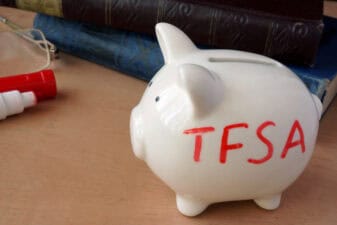When I talk about achieving financial independence — whether to embark on traditional retirement or more imminent mid-life transitions — I always see a dividing line. Early in the financial lifecycle, we tend to be in debt; that is, we have a negative net worth. Financial assets tend to be minimal, while young graduates tend to have a fair bit of student debt. As they enter the workforce in their 20s, they may accumulate credit card debt and then, of course, they meet that magic someone, marry and start the stage of family formation, typically taking on mortgage debt to purchase their first home.
Throughout one’s 20s, odds are that after subtracting liabilities from savings and investments, our young couple will still have a slight negative net worth, or if they are particularly frugal, the beginnings of a small positive net worth. So, the magic line of getting out of all debt and entering a positive net worth, however tiny, is one worth celebrating. As one of the characters in my financial novel, Findependence Day, says to the protagonists (a young couple similar to the hypothetical one described above): “You can’t climb the tower of Wealth while you’re still mired in the basement of debt.”
So, yes, getting out of debt is a big achievement and the first essential step to achieving financial independence. And even though interest rates may seem minimal, keep in mind that even now, credit cards still charge close to 20% per annum in interest. Few investments can offer the kind of guaranteed return that paying off high-interest debt can generate.
How to prioritize paying off debt
Non-tax-deductible consumer debt — usually credit cards — is therefore a top priority for debt repayment. If the debt is substantially higher than student-loan debt, as it probably is, then credit card debt should be eliminated before student-loan debt. A distant third will be a home mortgage. A typical mortgage won’t be much more than 5% these days, but I’d still target paying off the mortgage as a viable goal for your 30s. In fact, I argue that “the foundation of financial independence is a paid-for home.”
American homeowners tend to be less aggressive in paying down mortgage debt than Canadians. It’s no mystery why: Americans can deduct mortgage debt from their income taxes while Canadians do not have a similar tax break. Therefore, there is more incentive for Canadians to jettison mortgage debt.
Back when my wife and I had a mortgage, interest rates were around 12% (in the late 1980s), so we made it a priority to be mortgage free by taking advantage of the 10% annual paydown privilege provided by our lender (most lenders do this). Keep in mind that even at today’s modest interest rates, most of the monthly payments you make on your mortgage go towards interest rather than paying down principal.
You’d be amazed to find how fast the mortgage can be whittled away by paying down mortgage principal directly: unlike the monthly (or bimonthly) blended required payments, the annual paydown goes 100% to reducing principal. Keep doing that for half a decade or so, and you’ll potentially save tens of thousands of dollars in interest payments and be that much closer to owning your home free and clear.
Life after mortgage
I have to admit that we thought life would be much simpler once the mortgage was gone. For the first time in our lives, we had neither rent nor a mortgage to pay. But, of course, our lives didn’t change that much once we were free of the mortgage albatross. Life is still an expensive proposition, and even without a mortgage, you still have to pay property taxes, maintenance, utilities, and all the myriad expenses homeowners face.
What did change was that rather than focusing on debt elimination, we could now focus on wealth accumulation. Being a naturally frugal couple, we didn’t go on a spending binge once the mortgage was burned. Suddenly, instead of paying out $2,000 every month (or whatever your mortgage “nut” happens to be), that’s $2,000 that can be dedicated to saving and investing: probably in a combination of a Registered Retirement Savings Plan (RRSP) and a Tax-Free Savings Account (TFSA).
If you’re in a higher tax bracket, you probably will have been adding to your RRSP even during the debt-paydown years. This should be doable if you’re half of a dual-income family. If you find it hard to decide between mortgage paydown or an RRSP contribution, consider this tip: make the annual RRSP contribution and then apply the resulting tax refund to paying down some of your mortgage principal — the best of both worlds!
Those in lower tax brackets may want to prioritize the TFSA over the RRSP, but even here, if you’re still in the stage of carrying substantial high-interest credit card debt, you may wish to put debt elimination ahead of TFSA contributions. Again, I can’t think of any investment that can beat the 20% annual savings (after-tax to boot) of eliminating credit card debt. (Except maybe owning shares of Visa or MasterCard. Visa was one of the top-returning stocks last year, which should tell you something!)
Foolish bottom line
While getting out of debt does not in itself constitute financial independence, it nevertheless remains a huge step towards it. Just how high the tower of wealth you wish to climb will depend on your life goals, but for most of us, even if you call it retirement, you want to set things up so that you have enough pensions and investment income that you can live what some call a “work optional” lifestyle.
Once you’re debt free and have a hefty enough nest egg, you can work only when you want to, not because you are compelled to, financially speaking. That’s my idea of Findependence, but it all begins with taking debt seriously when you are starting out and making a firm plan to dig out of the basement of debt.
See you on the tower of wealth on the other side when you do, and if you’ve reached the ground floor, then congratulations. You’re halfway there!








